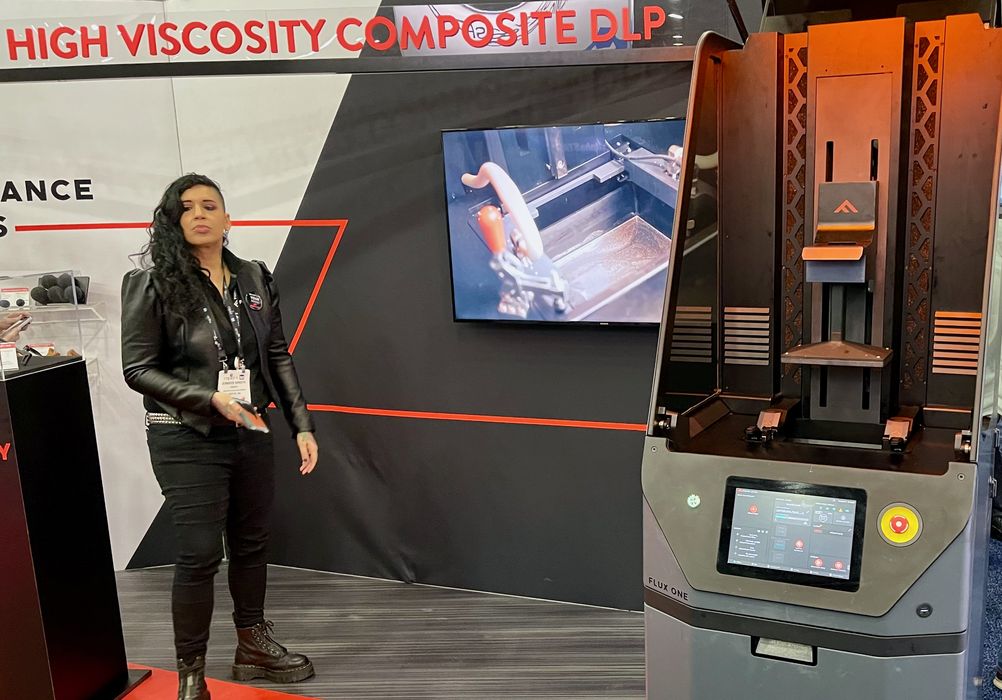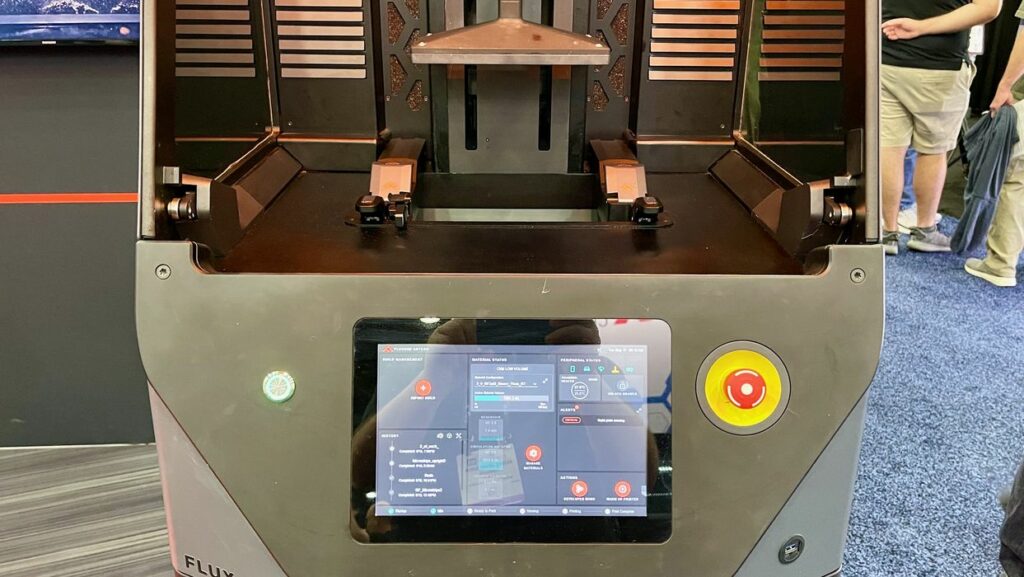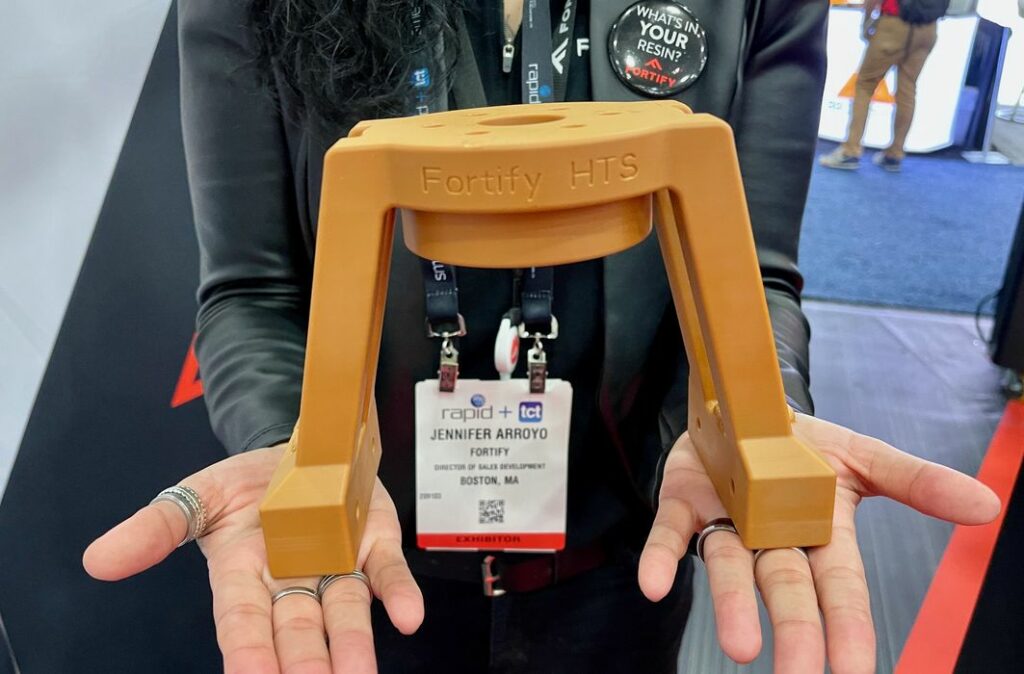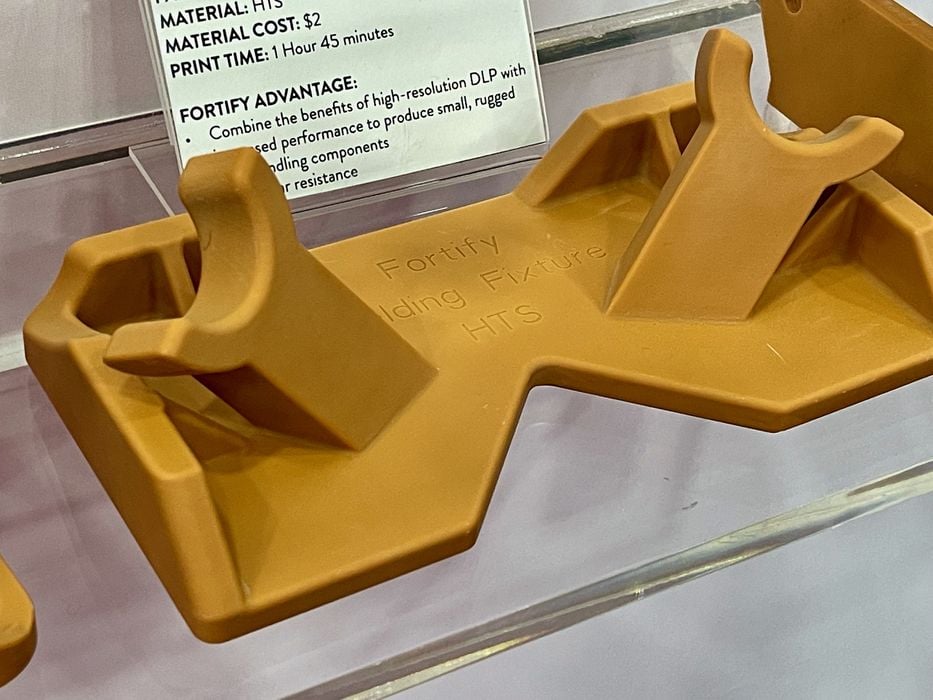
Fortify has been busy.
The 2016 startup worked hard to get their highly unusual 3D printing process off the ground, with the first devices shipped in 2020, and today they’re now growing strongly.
If you haven’t heard of Fortify, their 3D printing process is quite unique.
While it is a DLP-based liquid photopolymer process, there is a very big difference. The photopolymer resin contains reinforcing fibers. Fortify calls this technology “Continuous Kinetic Mixing”, or CKM. The circulation ensures the fibers are uniformly distributed through the resin, and does not permit them to settle on the bottom of the resin tank.
CKM allows the use of viscous resins because the technology continuously heats and recirculates the resin through the system. Viscous resins mean the use thicker resins that include additives for strength or other properties. In other words, better resins for engineering purposes.
That alone might be of interest, but there’s more incredibly interesting feature: these fibers can be affected by a magnetic field.
Fortify coats some of their fiber materials with a ferro-magnetic surfacing before chopping them fine for inclusion in the resin. Then, during printing the device creates a magnetic field that can orient these fibers. If the fibers are properly aligned, then the part becomes significantly stronger.

But there’s even more: because the DLP light engine doesn’t have to illuminate the entire layer at once, it’s possible for the system to reorient the magnetic field for second and subsequent portions of each layer.
In other words, their technology is able to print parts that have perfectly aligned fiber reinforcements. This is organized by a sophisticated software tool that comes with the machine, Compass. (Get it? Compasses point according to a magnetic field.)

The technology has now been packaged into several different platforms by Fortify:
- Flux Core, 204 x 115 x 330 mm build volume
- Flux One, equipped with the magnetic feature to perform 2D magnetic alignment of fibers
- Flux 3D, able to perform 3D magnetic alignment of fibers
The Flux Core is best for 3D printing viscous resins, while the Flux One is targeted at industrial uses for production of, for example, injection molds that can withstand many shots due to the part strength. The Flux 3D is targeted at unusual advanced applications where complex electrically-critical structures are required.

Today Fortify is selling machines and has many paying customers, a very good sign for a new startup company. They’ve also added a number of very unusual materials suitable for their systems:
- High Temperature & Strength Photopolymer
- Digital Tooling Photopolymer
- Radix™ 3D Printable Dielectric Materials
- High Purity Alumina (99.8%) Photopolymer
- Low Shrink Aluminum Silicate
- ESD High Temperature Resin
- Thermally Conductive Dielectric Resin
- ESD-Elastomer Resin
Fortify is also in the process of qualifying a number of third party resins for use in their Flux equipment.
Fortify tells us they have considerable interest and sales in the automotive and consumer goods industries, as well as the healthcare industry for the injection mold capabilities.
These successful moves have not been unnoticed by investors, who have to date provided a huge US$35M in total investment into Fortify, including a massive US$20M last year.
At this stage in the company’s lifecycle, it makes sense for them to focus their resources on sales and distribution. The main products are developed, and they need to grow.
Via Fortify
